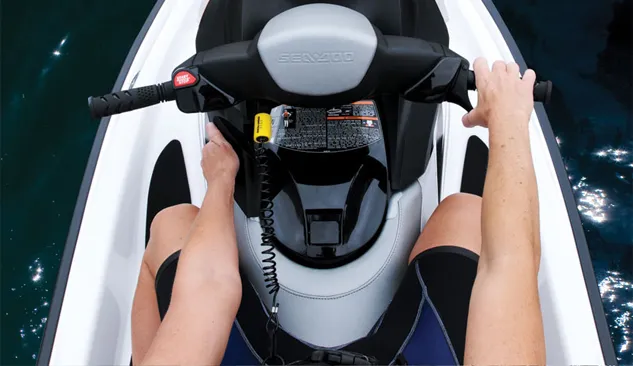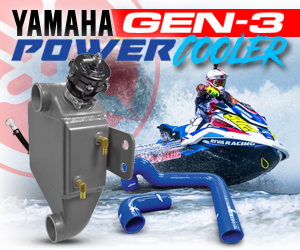It’s a nice day and you’re heading out for a ride on the water. You’ve got you PWC trailered and all set to go. Then it hits you. Did you remember to check your drain plug? Sadly, many people remove them for various reasons and forget to put them in their rightful place; the hole. Always check your plug before hitting the water. It would be a bummer to jet around, only to notice you’re ski is taking on water. Back to the launch you go!
That darned safety lanyard is another item a rider should keep an eye on. There are stories of people who weren’t wearing lanyards when thrown from their skis. That’s when a danger factor comes into play. The ski can become torpedo-like and cause serious injury or damage to anything in its path. Wear your lanyard so you don’t become the kook of the day or danger man.
Next on the list is cranking your ski in the proper depth of water. Give it at least two feet water under the intake grate before starting, otherwise the impeller will act as a vacuum and suck up sand and other debris that can cause harm to your craft. Another habit to get into is to lift the stern up and down a few times after you pull the machine off the beach. This action will flush the pump area.
Speaking of flushing, make sure your machine is flushed properly, especially after riding in saltwater. This is one way to avoid costly repairs and to keep your ski running longer and better.
The proper steps to flushing are:
1. Hook up the flush hose before turning on the water.
2. Crank the engine.
3. Now turn on the water.
4. Follow your owner’s manual instructions. Different flushing methods apply to each brand.
5. When finished, follow the steps in reverse order.
Moving onto docking. PWC’s aren’t meant for docking since they are easily susceptible to scratches and dings. However, if you must dock, here are some solutions. Aftermarket pop-up cleats are available if you don’t mind drilling a few holes in your watercraft.
Also, a few manufacturers offer cleats or tie downs as accessories. Fenders built for PWC’s are another option. Your craft may still slip under or into a dock, so it’s important to pay attention to tides and winds. Also, the wake of boat traffic may cause your PWC to slam into a dock. Your best bet is to beach the machine if possible. If you must dock it, secure it with lines as well as possible.
These 5 simple steps will help extend the life of your ski and maybe your own.










Great tips but you have made no ref to anchor your jetski and stating beaching your ski is the best bet. I always put my jetski on anchor and beaching would be a last resort. I understand that the sea in other parts of the world are different and beaching may be best. I’m from the UK and local to small pebble beaches which would make damages to the hull very quickly if you were to beach, saying that I still have seen people who do this but can only assume they have more money then sense or be of the same skill set of the cast of Dangerous Waters lol.
Very good points! Thank you for the additions.